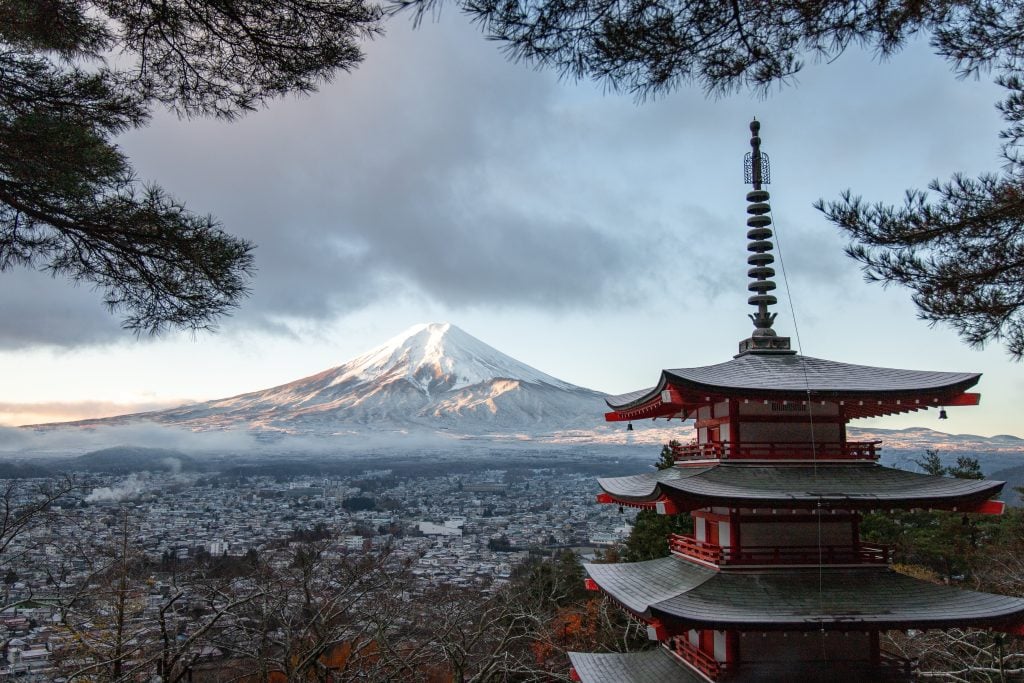Japan’s Highest Mountains: At the Pinnacle of Nature
Japan, renowned for its rich culture, historical heritage, and breathtaking landscapes, stands as a country defined by its geographical features. Mountains play a significant role in shaping the natural beauty and diversity of this nation. This article focuses on Japan’s highest mountains, taking a journey into the depths of this captivating geography with an emphasis on providing accurate and reliable information.
Mount Fuji: Reaching for the Sky in Japan
Mount Fuji, Japan’s highest mountain, stands as a symbolic monument for the country. Soaring to an elevation of 3,776 meters, this stratovolcano not only remains active but holds immense spiritual importance. Considered sacred in Japanese culture, Fuji has inspired various artworks, poems, and legends throughout history. Google Photos and Maps of Fuji
Peaks of Honshu: The Northern Japan Alps
Honshu, the largest island of Japan, is home to the Northern Japan Alps. Comprising the Hida Mountains, Kiso Mountains, and Akaishi Mountains, these three mountain ranges create a spectacular landscape. Known for their rich biodiversity and breathtaking scenery, these mountains attract nature enthusiasts from around the world.
Natural Wonders of Hokkaido: Daisetsuzan Mountains
Hokkaido, known for its cold climate and untouched wilderness, hosts the Daisetsuzan Mountains, showcasing some of the island’s highest peaks. These mountains are popular destinations for nature lovers and mountaineers, offering pristine landscapes and diverse ecosystems.
Rising Summits in Kyushu and Shikoku
In Kyushu, Mount Aso is situated within a massive caldera, providing impressive vistas. On Shikoku, Mount Ishizuchi stands out as the highest peak in the region. These mountains highlight the natural beauty of southern Japan.
Volcanic Activity and Safety Measures
Being situated along the Pacific Ring of Fire in the Pacific Ocean, Japan is prone to volcanic activity. Consequently, the country is home to numerous active volcanoes. Authorities continually monitor these volcanoes and implement necessary safety measures to ensure the well-being of visitors.
In conclusion, Japan’s highest mountains not only offer breathtaking views but also serve as reflections of Japanese culture and mythology. These mountains provide an opportunity for visitors to explore the enchanting beauty of nature and delve into the depths of Japan’s geography.
Mountains over 3000 meters
| Mountain | Meters | Feet | Prefecture |
|---|---|---|---|
| Mount Fuji | 3,776 | 12,388 | Shizuoka / Yamanashi |
| Mount Kita | 3,193 | 10,476 | Yamanashi |
| Mount Okuhotaka (Hotakadake) | 3,190 | 10,466 | Gifu / Nagano |
| Mount Aino | 3,190 | 10,466 | Shizuoka / Yamanashi [1] |
| Mount Yari | 3,180 | 10,433 | Gifu / Nagano |
| Mount Warusawa | 3,141 | 10,305 | Shizuoka |
| Mount Akaishi | 3,120 | 10,236 | Nagano / Shizuoka |
| Mount Karasawa | 3,110 | 10,203 | Gifu / Nagano |
| Mount Kitahotaka | 3,106 | 10,190 | Gifu / Nagano |
| Mount Obami | 3,101 | 10,174 | Gifu / Nagano |
| Mount Maehotaka | 3,090 | 10,138 | Nagano |
| Mount Naka | 3,084 | 10,118 | Gifu / Nagano |
| Mount Arakawa-Naka | 3,084 | 10,118 | Shizuoka |
| Mount Ontake | 3,067 | 10,062 | Gifu / Nagano |
| Mount Nishinōtori | 3,051 | 10,010 | Shizuoka / Yamanashi |
| Mount Shiomi | 3,047 | 9,997 | Nagano / Shizuoka |
| Mount Senjō | 3,032.56 | 9,949 | Nagano / Yamanashi |
| Mount Norikura | 3,026 | 9,928 | Gifu / Nagano |
| Mount Tate | 3,015 | 9,892 | Toyama |
| Mount Hijiri | 3,013 | 9,885 | Nagano / Shizuoka |





